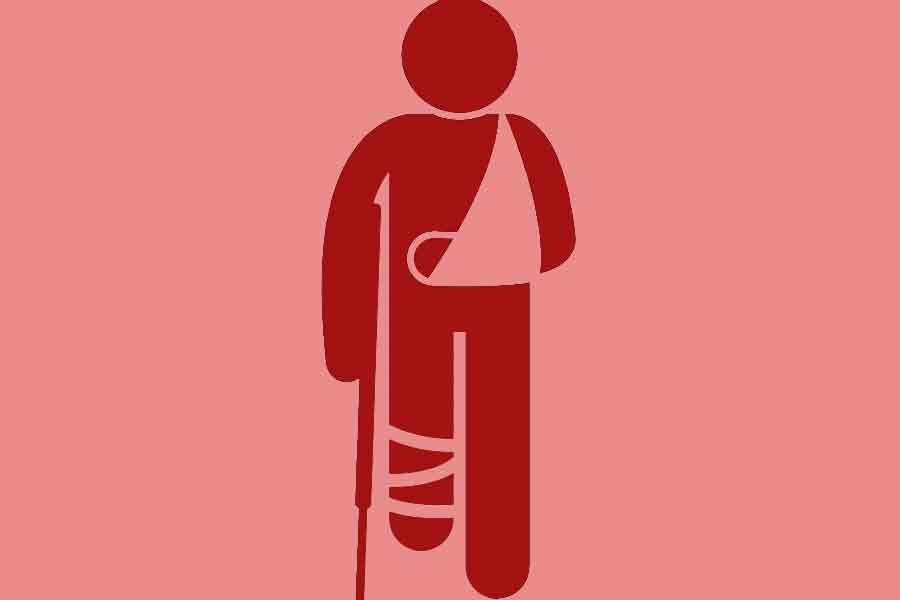Injuries-intentional or unintentional-when serious in nature are life-altering conditions. Great improvements have been made in high-income countries in reducing morbidity and mortality following severe injuries arising from violence, traffic accidents, or occupational hazards. While higher life expectancy and improved quality of life following injuries have been largely credited to the advancement in clinical care, a large part of it is also credited to early acute management and long-term rehabilitation measures. The focus of rehabilitation research in high-income countries has recently been shifted towards community integration of patients as they return home following discharge from inpatient rehabilitation facilities. Many of the non-immediate consequences suffered by these individuals from injuries do not occur from the injury itself but from the physical, social, and economic barriers that exist when they subsequently try to restart their life.
Serious injuries mostly occur among healthy working-age adults and many of them have an active family and social life. Many factors impact the quality of life and economic productivity of injured individuals once they return to the community. Community integration is a vital component of the entire rehabilitation process. Home integration refers to the active participation of an individual in the home activities such as doing groceries, preparing meals, doing household work, caring for children, and planning social gatherings in the home. Social integration refers to the activities that require participation outside the home, such as - shopping, leisure activities, visiting friends and relatives, and managing finance. Productive integration refers to employment, educational and vocational activities. It also includes the ability to travel alone.
An outcome measure of great interest in the rehabilitation of injured people is life satisfaction. Various disablement models have acknowledged the importance of measuring subjective outcomes like life satisfaction and quality of life. A serious injury greatly lowers the quality of life among injured individuals and impacts their mental health. The high incidence of depression, anxiety, post-traumatic stress disorder, and suicide have been reported by research studies among these individuals. For example, suicide rates among people with spinal cord injuries have been reported to be several times higher than the general population by studies from the United States of America, Australia, and Denmark. Only the individual involved can correctly assess the quality of his or her life. Life satisfaction is "the degree to which people have positive appraisals and feelings about their lives, considered as a whole". Life satisfaction as an outcome measure of individuals with serious injuries has been largely ignored in rehabilitation medicine, especially in middle and low-income countries. Better community integration may lead to higher life satisfaction. Considering the socio-cultural differences, it is possible that the perception of life satisfaction may vary considerably among individuals by country. Despite being considered important rehabilitation measures, community integration and life satisfaction have rarely been studied in Bangladesh.
The incidence rate of serious injuries is reported to be very high in Bangladesh resulting largely from violence, traffic accidents, falls from heights, and occupational hazards. People with serious injuries in the developing world lag behind in accessing many of the rehabilitation services widely available in the developed world because of a general lack of knowledge and concern, and limited economic and environmental resources. The economies of many of these developing countries with a relatively higher proportion of young age population base often depend on the agricultural and manufacturing sectors. A large segment of the working-age population with lower educational attainment or skills or socio-economic disadvantage is primarily engaged in manual, physically demanding, and hazardous jobs.
Physical disability resulting from serious injuries greatly reduces one's survival advantage in a highly competitive and resource-limited society like Bangladesh. It always adds a substantial economic burden to a family and puts up a lot of challenges for injured individuals to integrate into the community. Previous studies conducted on the injured population in Bangladesh mostly presented descriptive information about the injured and did not follow outcome measures like community integration and delineating its association with life satisfaction. Measuring these important outcomes with validity and rigour is vital as future research studies and evaluating the effectiveness of programs and interventions on people with injury or disability can help use these as more meaningful assessment tools.
Community integration and life satisfaction are important health outcome measures that affect many aspects of the life of individuals with serious injuries. Life adjustment following serious injuries has many external determinants and rehabilitation services, and care providers need to identify and prioritise these factors. Both governmental organisations and NGOs should plan to develop and offer disability-friendly employment opportunities for these individuals. Employer groups, industry associations, and workers' advocacy groups on their part may arrange and advocate for appropriate accommodations in the workplace. Public transportation services that are wheelchair and trolley accessible and have a safe lift and lock and-down systems are almost non-existent in Bangladesh. Without disability-friendly public transportation facilities, returning to education, resuming employment, and involving in social activities is very difficult. Affordable assistive devices, particularly mobility devices are powerful tools to help the functioning of individuals with serious injuries. However, assistive devices featuring low technology should be developed considering the rural structure and housing conditions in Bangladesh. Innovations in assistive technology should be encouraged by subsidies and grants.
The unmet need for accessible housing is another area that needs attention. A house with inaccessible bathrooms, kitchens, and stairs reduces one's ability to self-care and increases dependence on caregivers for simple household tasks such as cooking meals and looking after children. Non-governmental organisations and government ministries should plan to work collaboratively to raise awareness in society about the needs of people who develop disabilities from injuries, design and deliver adequate disability-friendly housing and transportation facilities, and offer discounted and subsidised assistive devices.
Dr. Hasnat M Alamgir is Professor and Chair of Public Health at IUBAT- International University of Business Agriculture and Technology, Dhaka.


